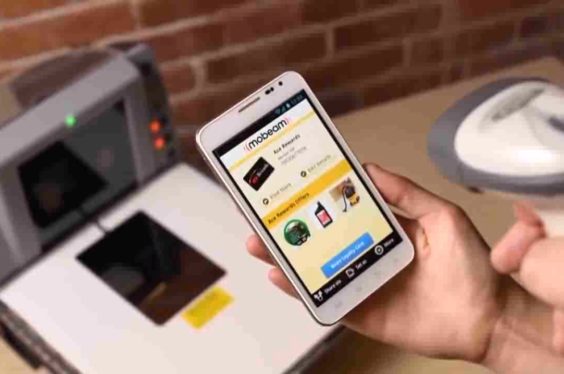
Advocates of paperless coupons say they’re far superior to printed coupons, in part because they’re much less susceptible to fraud. After all, creating a counterfeit paper coupon is as easy as photocopying it or just creating your own (which, of course, is not to say it’s recommended or that you won’t get caught doing it.) And you can’t do that with a digital or mobile coupon.
But that doesn’t mean paperless coupons are completely immune to fraud. Mobile coupons that feature a scannable bar code, for example, can be counterfeited when unscrupulous couponers grab a screenshot and share it with others, or just use it themselves again and again.
So how to solve this problem? T-Mobile has an idea. It’s proposing a system in which a mobile coupon’s bar code won’t appear on your phone’s screen until it’s in the very process of being scanned at the checkout. And then it will disappear in the blink of an eye. So unless you have lightning-fast reflexes, you’ll never be able to grab a screenshot of that mobile coupon for nefarious use.
The concept is described in a newly-published patent application entitled “Laser Light Detection and Barcode Display at Mobile Phone.”
“The increased use of barcodes and QR codes in a wide variety of applications has made them a target for hacking attacks,” the patent application explains. Users can “impermissibly share digital barcodes using screen capture methods” and “freely-available computer programs allow hackers to decode or write barcodes.”
So T-Mobile’s system would use your phone’s cameras to implement something of a checkout scan in reverse. As the store’s checkout system looks for a bar code to scan, T-Mobile’s system will be scanning for a scanner.
When you use T-Mobile’s system to access a mobile coupon via an app or online, the bar code won’t appear on the screen at first. Instead, the system will use your phone’s front camera to take a series of rapid, temporary photographs – five per second – and analyze what it sees, by comparing “the color and brightness of the retrieved image data with the expected color and brightness associated with a red laser light barcode scanner.” If it concludes that the light source is consistent with the light emitted from a point-of-sale scanner – that is to say, at the moment you’re holding the phone’s screen face down over a scanner, or holding a handheld scanner up to the screen – only then will the mobile coupon’s bar code appear on the screen.
“When the systems and methods do not detect a (light source) match, they prevent the display of the barcode, thus deterring digital barcode fraud,” the patent documentation explains.
Other coupon providers have come up with other methods of preventing fraudsters from grabbing screenshots of their mobile coupons or trying to create their own. Some providers use bar codes that are specially designed for unique, one-time use. Others are proposing to compare scanned mobile coupons against a “positive offer file” – so even if the bar code is scannable, if the coupon is not listed in the positive offer file as a current, valid offer, it won’t be accepted.
It’s worth noting, though, that compared to paper coupon fraud, mobile coupon fraud barely rates right now. That’s because most retailers don’t accept mobile coupons – because they’re technologically incapable of doing so. The standard red laser lights used by most retail scanners are unable to read a bar code off of a backlit phone screen. Only camera-based image scanners, like the ones Target uses, can.
This is a challenge that a company called Mobeam once tried to solve, by reversing the process and sending beams of light in a bar-coded pattern from your phone to the scanner, ensuring that any scanner could read a mobile bar code. But Mobeam shut down before its technology took off, and mobile coupon acceptance still isn’t any more common than it was before. So T-Mobile’s system of detecting scanners to prevent mobile coupon fraud is only as good as the scanners it’s detecting.
In the never-ending fight against coupon fraud, it’s a step in the right direction at least. Unethical couponers will always find a way to cheat the system. But it’s all about staying one step ahead of the fraudsters. So if you’ve never even considered the possibility of counterfeiting a mobile coupon – T-Mobile hopes its invention helps to ensure that you never do.
Image source: Mobeam















